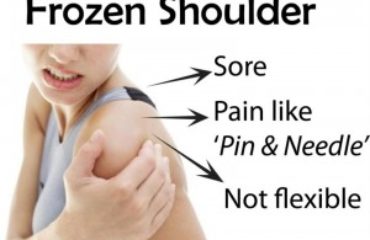Common chronic conditions can occur in the shoulders of throwing athletes, particularly baseball players and more specifically in pitchers. These painful shoulder conditions include tendinitis, bursitis, impingement, and subluxation.
Symptoms of Shoulder Injuries
Typically, the main complaint with any shoulder injury is pain that gets progressively worse. At first, the pain may only be noticeable when actually throwing or for a little while after. It usually disappears by the following day. Eventually, shoulder pain will be present constantly. Thus, the athlete will be incapable of throwing properly, due to the severity of their pain.
The above mentioned shoulder injuries are closely related. All cause pain in the same region of the shoulder. This fact makes it very difficult to ascertain which injury is which and which one developed first. Pain originates within a tendon or pinched bursa, which is a cushion that allows tendon movement, over the shoulder bone, while contracting/ relaxing.
- Rotator Cuff Tendinitis: Occurs when the rotator cuff (group of four tendons which stabilize the shoulder joint) becomes irritated because the structures rub on the undersurface of the shoulder bone called the acromion. This rubbing results in tearing and inflammation of the rotator cuff tendons.
- Bursitis: Caused by repeated pinching of the bursae, between the shoulder structures, leading to swelling, inflammation, as well as extra pressure on an already inflamed area.
- Impingement: This condition can develop from a combination of the above three conditions plus the fact that there is limited space within the shoulder area. Pain and weakness when throwing overhand are often sign and symptoms of impingement.
- Subluxation: Condition where the shoulder becomes partially dislocated and subsequently returns to its original position. This causes instability of the shoulder joint. It can develop as the result of a traumatic event, such as a fall, or from the ultimate by-product of impingement and bursitis. Subluxation can also be directly related to over used shoulder muscles. Baseball players often continue to throw, even after fatigue becomes apparent. When a throwing arm gets over tired, the affected muscles are not able to stabilize the shoulder, resulting in subluxation.
- Labral Tear – When a throwing athlete overuses the shoulder. The structures stabilizing the shoulder joint can receive extra stress and tear. This is referred to as a SLAP lesion.
- Biceps Tendinitis – Part of the biceps runs through the shoulder. Inflammation can occur due to throwing repetitively.
Treatment Plans
 All four injuries are primarily related to shoulder overuse. Therefore, relief is possible with an adequate amount of rest to allow enough time for healing. A stretch, strengthening, and muscle building exercise regimen can be extremely beneficial. In addition, a throwing program that includes sufficient warm-ups and a gradual return to throwing, after a long break, is strongly recommended.
All four injuries are primarily related to shoulder overuse. Therefore, relief is possible with an adequate amount of rest to allow enough time for healing. A stretch, strengthening, and muscle building exercise regimen can be extremely beneficial. In addition, a throwing program that includes sufficient warm-ups and a gradual return to throwing, after a long break, is strongly recommended.
Over 90% of throwing injuries respond to conservative treatments including anti-inflammatories (NSAIDS), physical therapy or a cortisone injection to reduce pain. As a last resort, surgery may be necessary to shave down bone to provide more room for the shoulder tendons and bursae to move, or to fix a torn labrum to provide the necessary stability during throwing.

